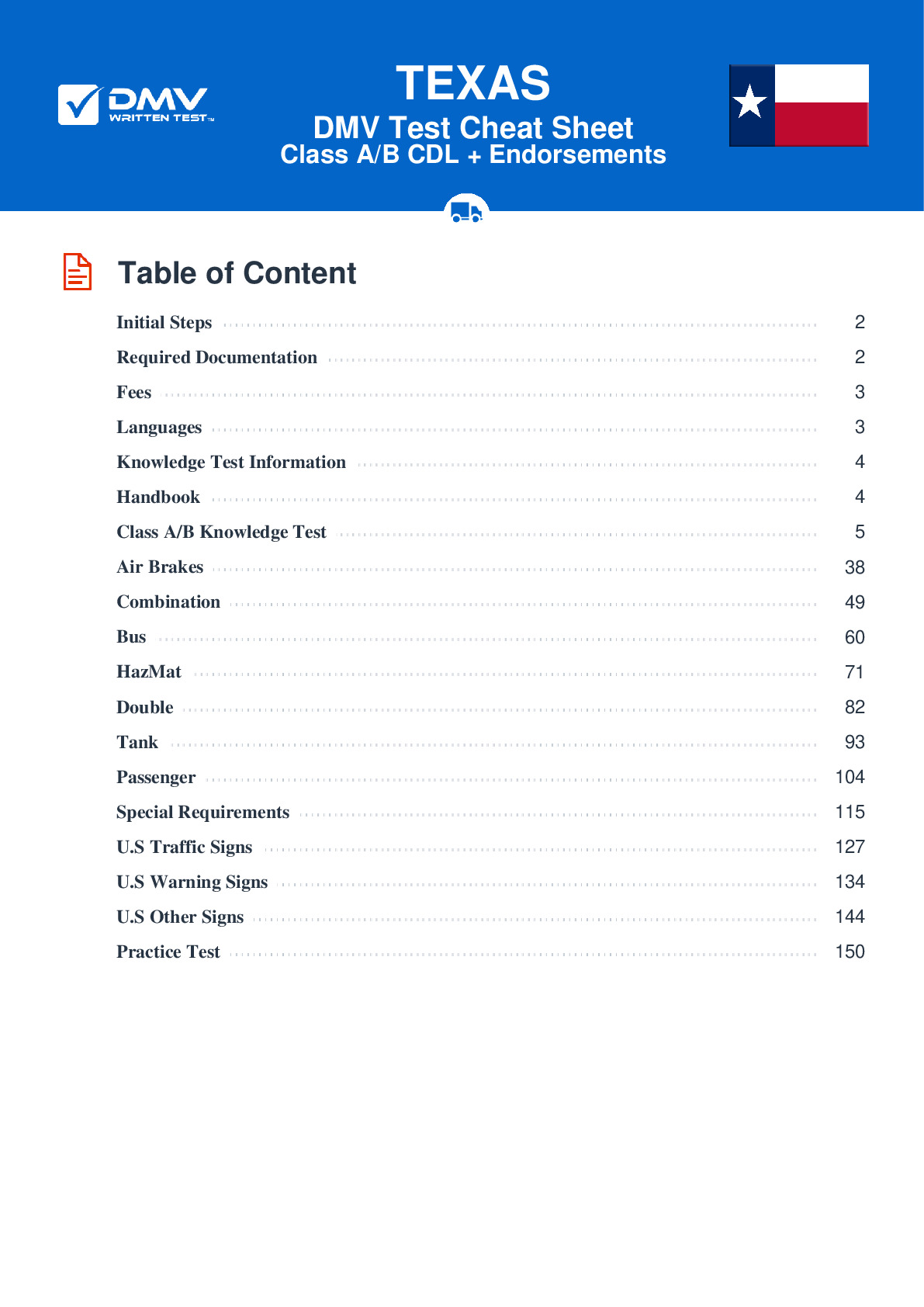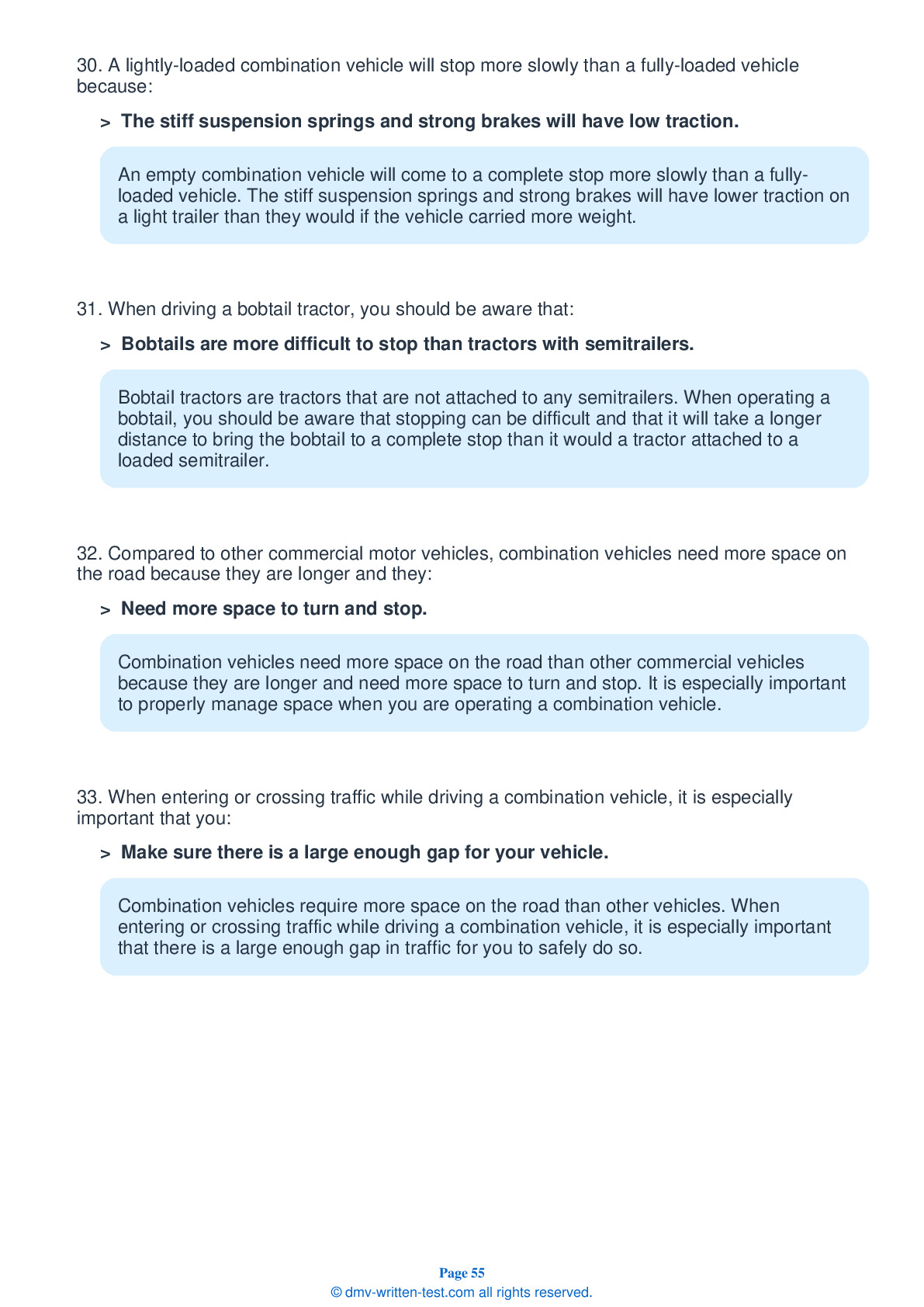Air Brakes
This endorsement is required for driving a vehicle with air brakes. To receive this endorsement, applicants must pass a test. The test consists of 25 multiple choice questions. Each question has four answer choices. To pass, the applicant must answer at least 20 questions correctly. Test questions come from the Texas Commercial Motor Vehicle Drivers Handbook. Questions come from chapters covering: Air Brakes. The Air Brakes endorsement may be used with the Class A, B or C CDL.
Number of Question
Passing Score
19. If using air tanks with manually operated drains, how often should you drain the tanks?
Explanation
To prevent the build up of oil and water in a vehicle's air tanks, manually operated air tank drains should be used at the end of each day of driving.
20. A low air pressure warning signal should activate:
Explanation
In an air brake system, a low air pressure warning signal must come on if air pressure in the tanks falls below 55 psi. This warning signal may come in the form of a light, a buzzer, or a wig wag.
21. What do anti-lock brakes do?
Explanation
The function of an Anti-Lock Braking System (ABS) is to prevent the vehicle's wheels from locking up from hard brake application.
22. The most common type of foundation brake used is the:
Explanation
The most common type of foundation brake is an s-cam drum brake.
23. What happens if the air pressure in a system's air tanks falls below 60 psi?
Explanation
In an air brake system, a low pressure warning signal should activate if the pressure in the air tanks falls to a level below 60 psi. This signal may be in the form of a warning light or a wig wag.
24. Most heavy-duty vehicles use ____ air brake systems.
Explanation
The majority of heavy-duty vehicles are equipped with dual air brake systems.
25. Spring brakes come on:
Explanation




